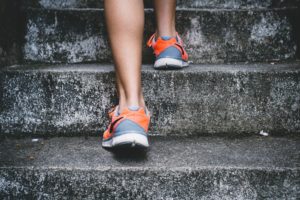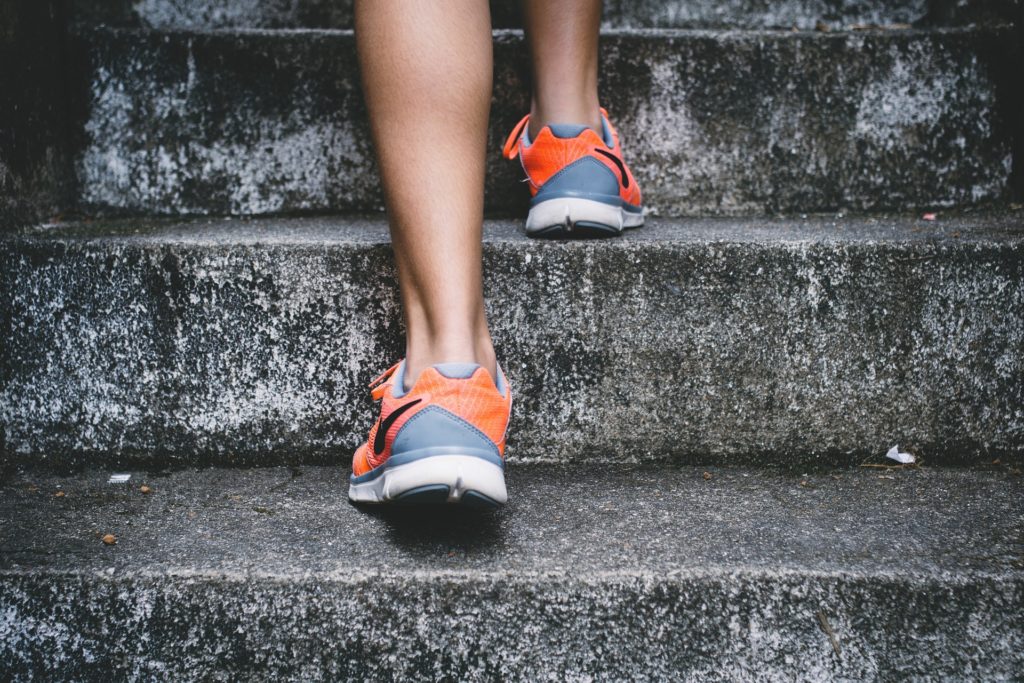When it comes to choosing the right shoes, it’s important to consider not only style and comfort, but also the specific needs of your feet and the activities you’ll be participating in. Whether you’re a runner, basketball player, or someone who spends long hours on their feet at work, the right shoes can make a big difference in terms of support, cushioning, and overall comfort. In this post, we’ll explore the importance of choosing the right shoes for a variety of conditions, including peroneal tendonitis, ball of foot pain, tendonitis, metatarsalgia, flat feet, being overweight, and sciatica. We’ll also discuss what attributes to look for in shoes to meet the needs of each condition, and provide some general guidelines based on internet research and product reviews. Please note that this is not medical advice, and it’s always a good idea to consult with a healthcare professional before making any decisions about your footwear.
Best Running Shoes for Peroneal Tendonitis:
Peroneal tendonitis is a condition that affects the tendons in the foot and ankle, causing pain, swelling, and difficulty moving. It’s often caused by overuse or improper footwear, and can be especially common in runners. To choose the best running shoes for peroneal tendonitis, look for shoes that offer good arch support and a sturdy heel cup to help stabilize the foot and ankle. A cushioned sole can also help absorb shock and reduce impact on the tendons. Some other attributes to consider include a flexible forefoot, a breathable upper, and a comfortable fit. It’s also a good idea to avoid shoes with a high heel-to-toe drop, as these can place extra strain on the tendons.
Best Running Shoes for Ball of Foot Pain:
Pain in the ball of the foot, also known as metatarsalgia, is a common condition that can be caused by a variety of factors, including improper footwear, high arches, and overuse. To choose the best running shoes for ball of foot pain, look for shoes with a padded insole and a wide toe box to help alleviate pressure on the metatarsals. A cushioned midsole can also help absorb shock and reduce impact on the feet. Some other attributes to consider include a flexible forefoot, a breathable upper, and a comfortable fit. Avoid shoes with a narrow toe box or a stiff, inflexible sole, as these can increase pressure on the ball of the foot.
Best Running Shoes for Tendonitis:
Tendonitis is a condition that affects the tendons in the body, causing inflammation and pain. It can occur in various parts of the body, including the feet and ankles. To choose the best running shoes for tendonitis, look for shoes with good arch support and a sturdy heel cup to help stabilize the foot and ankle. A cushioned sole can also help absorb shock and reduce impact on the tendons. Some other attributes to consider include a flexible forefoot, a breathable upper, and a comfortable fit. Avoid shoes with a high heel-to-toe drop, as these can place extra strain on the tendons.
Best Shoes for Metatarsalgia:
Metatarsalgia is a condition that causes pain in the ball of the foot, often due to improper footwear, high arches, or overuse. To choose the best shoes for metatarsalgia, look for shoes with a padded insole and a wide toe box to help alleviate pressure on the metatarsals. A cushioned midsole can also help absorb shock and reduce impact on the feet. Some other attributes to consider include a flexible forefoot, a breathable upper, and a comfortable fit. Avoid shoes with a narrow toe box or a stiff, inflexible sole, as these can increase pressure on the ball of the foot.
Best Running Shoes for Metatarsalgia:
When it comes to choosing the best running shoes for metatarsalgia, the same principles apply as for choosing shoes for metatarsalgia in general. Look for shoes with a padded insole and a wide toe box to help alleviate pressure on the metatarsals, as well as a cushioned midsole to absorb shock and reduce impact. A flexible forefoot, breathable upper, and comfortable fit are also important considerations. Avoid shoes with a narrow toe box or a stiff, inflexible sole.
Best Running Shoes for Achilles Tendonitis:
Achilles tendonitis is a condition that affects the tendons in the heel and ankle, causing pain, swelling, and difficulty moving. It’s often caused by overuse or improper footwear, and can be especially common in runners. To choose the best running shoes for Achilles tendonitis, look for shoes with good arch support and a sturdy heel cup to help stabilize the foot and ankle. A cushioned sole can also help absorb shock and reduce impact on the tendons. Some other attributes to consider include a flexible forefoot, a breathable upper, and a comfortable fit. It’s also a good idea to avoid shoes with a high heel-to-toe drop, as these can place extra strain on the tendons.
Best Basketball Shoes for Flat Feet:
Flat feet, also known as pes planus, is a condition in which the arch of the foot is low or absent. It can cause a variety of symptoms, including foot pain, fatigue, and difficulty standing for long periods of time. To choose the best basketball shoes for flat feet, look for shoes with good arch support and a sturdy heel cup to help stabilize the foot and ankle. A cushioned sole can also help absorb shock and reduce impact on the feet. Some other attributes to consider include a flexible forefoot, a breathable upper, and a comfortable fit. Avoid shoes with a high heel-to-toe drop, as these can place extra strain on the feet.
Best Running Shoes for Overweight:
Being overweight can place extra strain on the feet and ankles, making it important to choose the right running shoes to help support and cushion the feet. To choose the best running shoes for being overweight, look for shoes with good arch support and a sturdy heel cup to help stabilize the foot and ankle. A cushioned sole can also help absorb shock and reduce impact on the feet. Some other attributes to consider include a flexible forefoot, a breathable upper, and a comfortable fit. Avoid shoes with a narrow toe box or a stiff, inflexible sole, as these can increase pressure on the feet.
Best Steel Toe Shoes for Walking on Concrete:
If you work in a job that requires you to walk on concrete for long periods of time, it’s important to choose shoes that offer both protection and comfort. To choose the best steel toe shoes for walking on concrete, look for shoes with a sturdy steel toe cap to protect your feet from falling objects or other hazards. A cushioned insole and a padded collar and tongue can also help reduce fatigue and discomfort. Some other attributes to consider include a slip-resistant outsole, a breathable upper, and a comfortable fit.
Best Safety Shoes for Walking on Concrete:
In addition to steel toe shoes, there are also other types of safety shoes designed specifically for walking on concrete. To choose the best safety shoes for walking on concrete, look for shoes with a sturdy and protective construction, such as a steel toe cap or a composite toe. A cushioned insole and padded collar and tongue can also help reduce fatigue and discomfort. Some other attributes to consider include a slip-resistant outsole, a breathable upper, and a comfortable fit. It’s also a good idea to choose shoes that are certified to meet industry safety standards, such as ASTM or ANSI.
Best Shoes for Working on Concrete All Day:
If you work in a job that requires you to stand or walk on concrete for long periods of time, it’s important to choose shoes that offer both support and cushioning. To choose the best shoes for working on concrete all day, look for shoes with good arch support and a sturdy heel cup to help stabilize the foot and ankle. A cushioned sole can also help absorb shock and reduce impact on the feet. Some other attributes to consider include a flexible forefoot, a breathable upper, and a comfortable fit. Avoid shoes with a narrow toe box or a stiff, inflexible sole, as these can increase pressure on the feet.
Best Shoes for Metatarsalgia:
As mentioned earlier, metatarsalgia is a condition that causes pain in the ball of the foot, often due to improper footwear, high arches, or overuse. To choose the best shoes for metatarsalgia, look for shoes with a padded insole and a wide toe box to help alleviate pressure on the metatarsals. A cushioned midsole can also help absorb shock and reduce impact on the feet. Some other attributes to consider include a flexible forefoot, a breathable upper, and a comfortable fit. Avoid shoes with a narrow toe box or a stiff, inflexible sole, as these can increase pressure on the ball of the foot.
Best Shoes for Working on Concrete Floors:
If you work in a job that requires you to stand or walk on concrete floors for long periods of time, it’s important to choose shoes that offer both support and cushioning. To choose the best shoes for working on concrete floors, look for shoes with good arch support and a sturdy heel cup to help stabilize the foot and ankle. A cushioned sole can also help absorb shock and reduce impact on the feet. Some other attributes to consider include a flexible forefoot, a breathable upper, and a comfortable fit. Avoid shoes with a narrow toe box or a stiff, inflexible sole, as these can increase pressure on the feet.
Best Shoes for Standing on Concrete:
If you spend long periods of time standing on concrete, it’s important to choose shoes that offer both support and cushioning to help reduce fatigue and discomfort. To choose the best shoes for standing on concrete, look for shoes with good arch support and a sturdy heel cup to help stabilize the foot and ankle. A cushioned sole can also help absorb shock and reduce impact on the feet. Some other attributes to consider include a flexible forefoot, a breathable upper, and a comfortable fit. Avoid shoes with a narrow toe box or a stiff, inflexible sole, as these can increase pressure on the feet.
Best Running Shoes for Sciatica:
Sciatica is a condition that affects the sciatic nerve, which runs from the lower back down through the legs. It can cause pain, numbness, and tingling in the lower back, buttocks, and legs. To choose the best running shoes for sciatica, look for shoes with good arch support and a sturdy heel cup to help stabilize the foot and ankle. A cushioned sole can also help absorb shock and reduce impact on the feet. Some other attributes to consider include a flexible forefoot, a breathable upper, and a comfortable fit. Avoid shoes with a high heel-to-toe drop, as these can place extra strain on the lower back and legs. It’s also a good idea to choose shoes with a wide toe box to allow for proper toe movement, as well as a soft, flexible upper to accommodate any swelling or discomfort.
A simple shoe test
Summing Up
In conclusion, choosing the right shoes is important for a variety of conditions and activities, including running, basketball, and standing or walking on concrete for long periods of time. By considering the specific needs of your feet and the activities you’ll be participating in, you can find shoes that offer the right balance of support, cushioning, and comfort. Some attributes to look for include good arch support, a sturdy heel cup, a cushioned sole, a flexible forefoot, a breathable upper, and a comfortable fit. Remember, this is not medical advice, and it’s always a good idea to consult with a healthcare professional before making any decisions about your footwear.
Read more DIY posts!
more research
